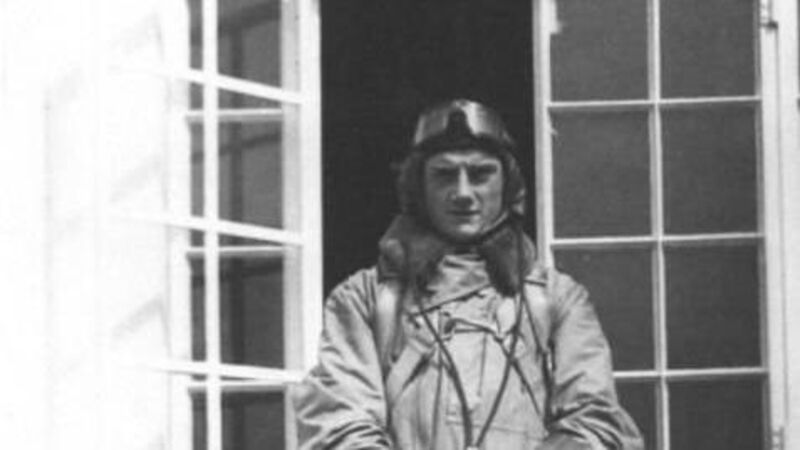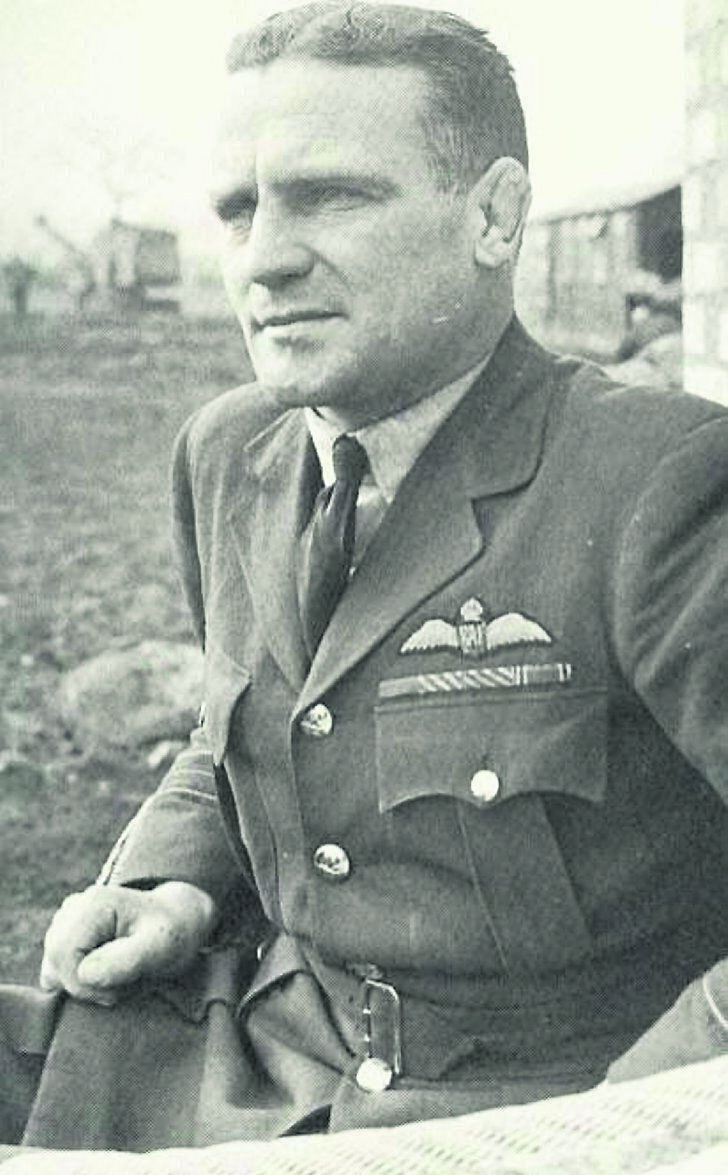A ‘few’ good men: Saluting the courageous Cork pilots of WWII

Cork pilot William Murphy, who died on the first day of World War II, flying with the RAF.
The 23-year-old son of William and Katherine Murphy, from Mitchelstown, had become a Pilot Officer with the Royal Air Force (RAF) in England 18 months earlier.
When Britain declared war on Germany on Sunday, September 3, 1939 - the day Cork lost the All-Ireland ‘Thunder and Lightning’ hurling final to Kilkenny - William was briefed on the fact he would be involved in the first sortie of the war into enemy territory the very next day.
On September 4, as he led a bombing foray on warships at a port in northern Germany, William’s Blenheim plane was shot down. In that moment, the Corkman became both the first Irish and first British pilot to be killed in World War II.
A report in the provided an insight into the response to the tragedy in Mitchelstown: “News of his death cast a gloom over the entire countryside and hundreds of messages of sympathy have been tendered to his mother, sister, brothers, aunts and all other relatives on their very sad bereavement.”
William’s sacrifice in the war against Adolf Hitler’s Nazi fascism came to mind this week, as the last surviving pilot of the Battle of Britain, Dubliner John ‘Paddy’ Hemingway, died aged 105.
It was a reminder that many brave men and women from Ireland fought and died fighting fascism, not least in the Battle of Britain, the airborne conflict that kept the Allied nations with a toehold in the war in the early years when Hitler threatened to run amok across Europe.
The odds were stacked against them: the average life expectancy of a Spitfire pilot during the Battle of Britain was just four weeks.
These brave men - and some RAF women too - became known as ‘The Few’ - adopting a line from British wartime leader Winston Churchill’s tribute to the RAF: “Never was so much owed by so many to so few.”
A few of those good men were from Cork.
******
Six of Cork’s contingent in the RAF in the Battle of Britain were from the Beamish family.
Victor, George, Charles, Cecil, Katherine, and Eileen were the sons and daughters of the headmaster of Dunmanway Model School.

Between them, the family provided an air marshal, an air vice-marshal, two group captains, and two flight lieutenants to the Allied war effort
As a Wing Commander, Victor Beamish was involved in downing 11 enemy aircraft during the Battle of Britain, and was awarded the Distinguished Service Order and the Distinguished Flying Cross.
He survived that battle, but later in the war, on March 28, 1942, Victor’s plane was hit during a firefight with a Messerschmitt a few miles south of Calais. His plane was last seen entering clouds - it was presumed he crashed into the English Channel.
He was described as the best-loved man in Fighter Command by one colleague, who wrote: “I don’t think any pilot would dare to do less than his best if Victor was about. Not because he might get ticked off, but because he would feel ashamed.”
Some Allied hero pilots of World War II settled in Cork after the war.
Although he did not take part in the Battle of Britain, Dutch fighter pilot Jan Linzel had tried to repel the Luftwaffe a few months earlier, when Germany declared war on the Netherlands on May 10, 1940.
He later escaped to Britain and joined the RAF.
Jan and his wife Marianne lived in Glengarriff for more than 30 years, and he died aged 103 in 2019.
Youghal-born Cecil McCall joined the RAF in 1943 and was shot down in his Spitfire over former Yugoslavia and taken prisoner by the Germans. He still had deep white marks across both his kneecaps in later life, caused when the controls of his plane smashed into them.
******
An estimated 120,000 Irishmen fought for Britain in World War II, and there were actually more from ‘neutral’ Ireland than from ‘loyal’ Northern Ireland. They also wore American, Canadian, Australian and New Zealand uniforms.
Dan Harvey, Cork author of several military books, including A Bloody Summer: The Irish At The Battle Of Britain, asked: “Why did they enlist? For a number of reasons: to seek adventure, for money, for family tradition. But also for altruistic reasons; many selflessly believed Hitler had to be stopped, that it was a world problem, and the best way to defend Ireland.
“It has not been until recent times that these people were recognised in Ireland and scant regard is paid, even now, to the Irish war workers in England.”
Mr Harvey, a former lieutenant colonel in the Irish Army and nephew of late Taoiseach Jack Lynch, reckoned that more than 40 RAF airmen taking part in the near four-month long Battle of Britain had Irish connections.
However, what mattered to these men was what they were fighting against - totalitarianism, fascism, people who wanted to take away the freedom of western countries, including Ireland. They were Irish patriots. They were adventurous too.
“We are Lords of the Air,” wrote Corkman Cecil McCall when he became a pilot. “There will never be another day like it, all we strove for, swotted for, drilled for, and sweated is there for all to see.”
******
Just to turn the wheel full circle, and to underline the extent of Cork involvement in World War II, I started off by mentioning Cork man William Murphy as the first Irish or British pilot casualty of the conflict in 1939.
Well, the last RAF aircraft to be shot down over the UK in the war claimed the life of Corkman Sergeant Denis Lucey 80 years ago this week, on March 17 - St Patrick’s Day - 1945.
The son of Denis and Annie Lucey, of Model Village, Tower, he was 25 years old, and was buried in Canovee Graveyard, down the road from my home in Carrigadrohid.
This week, Echo reader Paul Terry told me had spoken to Denis’s nephew Billy Lucey about his uncle’s death, and Billy said his own father never again enjoyed a St Patrick’s Day after his brother died on that day.
Billy visited his uncle’s grave over the St Patrick’s weekend and was pleasantly surprised to find a lovely bouquet of fresh flowers next to the headstone.







 App?
App?




